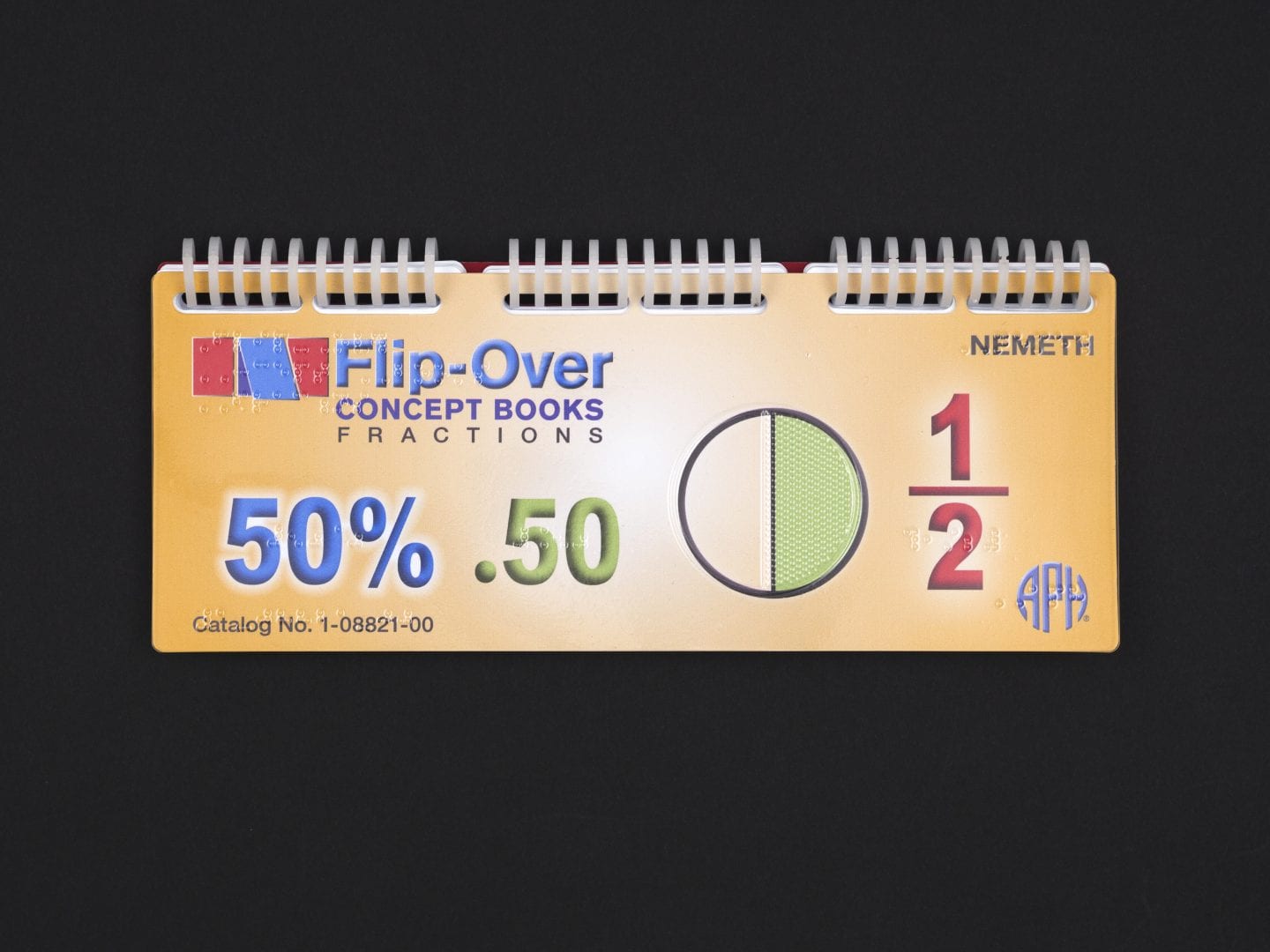Environment: dev.aph.org — Current roles: guest
 Learning Fractions With Our Flip-Over Concept Book
Learning Fractions With Our Flip-Over Concept Book
Are you trying to help your child understand why 1/4 is greater than 1/5? Or why 0.10 is equal to 10%? Our Flip-Over Concept Books: FRACTIONS is here to help!
Flip-Over Concept Books: FRACTIONS (available in Nemeth and UEB) is an interactive print and tactile book for students with blindness or low vision who are beginning to learn about fractions, decimals, and percents. It includes panels with tactile and print pie charts, fractions, decimals, percents, and comparison signs. Teachers or parents select panels and attach them in three piles on a booklet. The student then flips through the panels until the desired fractional, decimal, or percentage representations are found and then displayed, such as “1/4, 25%, 0.25” and “1/5, >, 1/8”.
Let’s see an example of use!
“Why is 1/4 greater than 1/5?”
Give your child two pie chart panels: one out of four and one out of five. Let them compare the areas of the shaded pieces. The 1/4 piece is bigger than the 1/5 piece.
Then, give your child the fraction panels of 1/4 and 1/5. Explain and make sure they understand that fractions 1/4 and 1/5 are symbolic representations (mathematical notations, a writing system to represent math concepts) of the pie charts one out of four and one out of five. Therefore, when directly comparing the math notations, fraction 1/4 is greater than fraction 1/5.
To strengthen their understanding, do the following practice:
- Pick up pie chart panels one out of six and two out of five, and fraction panels 1/6 and 2/5. Mix them up in random order and put the pile on the left column of the included booklet.
- Pick up pie chart panels one out of ten and two out of three, and fraction panels 1/10 and 2/3. Mix them up in random order and put the pile on the right column of the booklet.
- Pick up the comparison sign panels >, =, and <, and put them in the middle column of the booklet.
- Let your child flip the panels to show the relationships that they think is correct. The correct relationships are: “one out of six > one out of ten”, “1/6 > 1/10”, “two out of five < two out of three”, and “2/5 < 2/3”.
- Remind your child that they can compare two values by comparing the shaded areas on pie charts. Then, further, challenge them by asking “what if the numerators of two fractions are also different”. Flip the panels and see if they can find/understand the relationships: “one out of six < two out of three”, “1/6 < 2/3”, “two out of five > one out of ten”, and “2/5 > 1/10”. Let them directly compare the pie charts if they have difficulty understanding.
- Change the panels on the booklet to let your child practice the concept with new pie charts and fractions.
Share this article.
Related articles
APH’s Reach & Match® Learning Kit helps young children of all abilities develop their motor and social skills, all under...
Are you starting to go a bit stir-crazy? Maybe you are frantically trying to find fun activities for your children...
Are you a parent or teacher looking for expansion activities or take-home projects to do with your student with low...
